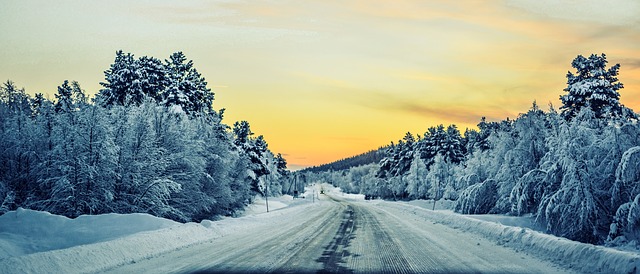
Prepare For Emergency Situations
Driving an HGV in winter requires you to be prepared for a wide array of emergencies that may occur. Here are the basic items you should have in your cabin:
- Ice scraper
- De-icing substances
- A bag of sand or coarse salt
- Shovel
- Flashlight
- An emergency blanket and extra warm clothes
- A high-visibility vest
- Enough food and water
- Enough fuel (at least half a tank, if not more)
Carefully Inspect Your Vehicle Before You Start Your Journey
Ensure you perform all basic checks before you start your journey. In addition, pay special attention to the following:
- Tires – Check the wear, the pressure, and the balance
- Lights – Remember to also check the fog lights and ensure you have at least one spare for each type of lamp
- Wipers – Check that they are free from ice and they work as expected
- Battery – Check its condition, its power and its charging system
- Fluids – Check the levels of all fluids and complete the ones that need it
- Exhaust – Ensure it is free from debris, snow and ice
- Defrosters – Check that they work
For your convenience, consider using an electronic forms app to carry out your daily vehicle checks, in order to prevent your papers from getting wet or damaged. Besides, writing with a pen on paper in extreme cold isn’t the most pleasant thing at all. If you are looking to become an HGV driver then this will all be covered in your training before you get your category c licence.
Check Weather Reports And Road Conditions
Use radio, GPS systems and any other information source to stay on top of the news in regard to the conditions of the roads on your route. Also, check out some weather reports, in order to ensure you pick the safest route to your destination.
Drive With Extreme Care
Sudden braking or direction change may result in accidents even in perfect driving conditions. In winter, such problems become much worse, hence the need for extra care while driving.
Drive slowly and be prepared to use your brakes at any given time. During winter, HGVs take much longer to stop, so drivers need to proceed with extreme care, in order to avoid collisions.
Always allow extra space between your vehicle and the one in front. Driving on ice and snow would require about ten times the normal braking distance to fully stop such a heavy vehicle. Similarly, fog, drizzle and rain may call for slowing down and increased care.
In winter, it’s always best to drive at a steady speed and avoid sudden braking.
Know Your Rules And Best Practices
During winter, HGV drivers use four or five blinks before changing the lane, in order to warn the other drivers about their intention to move over into the other lane. You shouldn’t try to keep up with other vehicles in terms of speed; rather try to find a safe speed and maintain it for as long as possible.
If you choose to go slower than other road users, consider using your hazard lights to tell other drivers that you can’t keep up with them.
Beware Of Hazards On The Road
Here are the main hazards you should be aware of while driving an HGV during winter:
- Black Ice – Sometimes, a thin layer of transparent ice may form on the road, making it look slightly wet. Should you notice that there’s no spray from the vehicle in front of you, you may want to look out for black ice.
- Fog – Thick and heavy fog results in severely limiting your visibility. In such situations, use your fog lights and slow down to a safe speed. Never travel faster than you’re comfortable with.